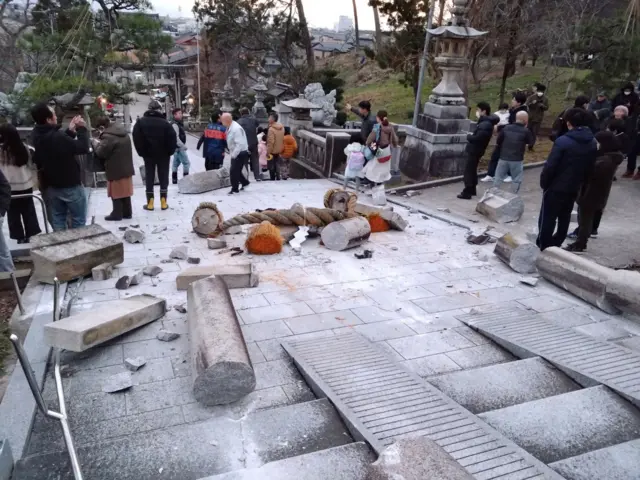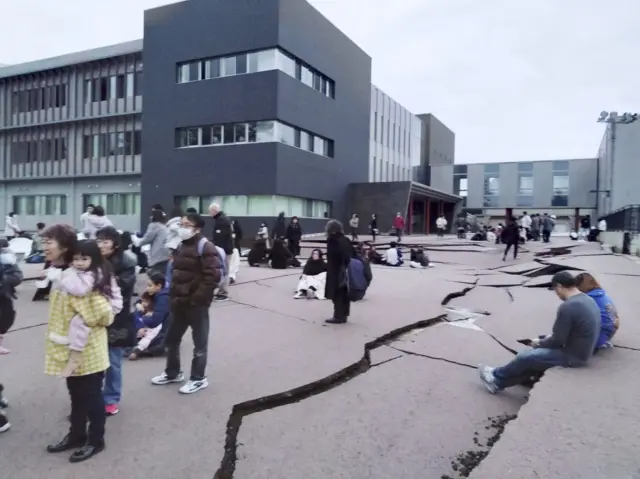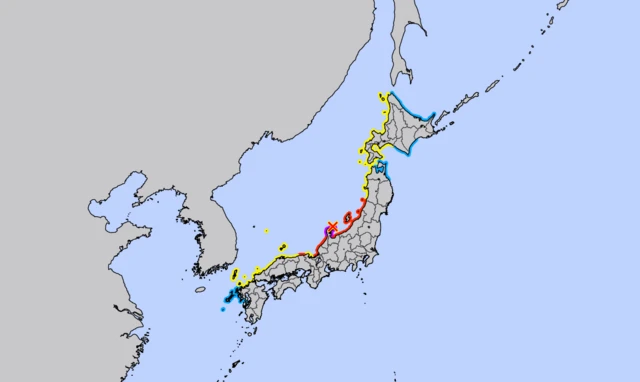More earthquake warningspublished at 09:59 GMT 1 January 2024
Japan has issued fresh warnings for earthquakes across the country. The alerts now include the prefectures of Ishikawa, Niigata, Nagano and Toyama.
More than 30 earthquakes - ranging in magnitude from 3.6 to 7.6 - have hit central Japan in the past three hours.




